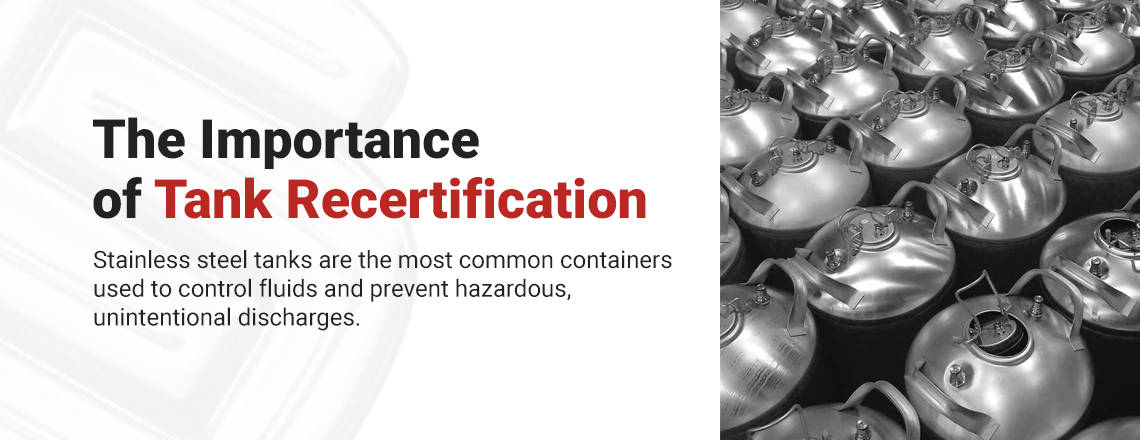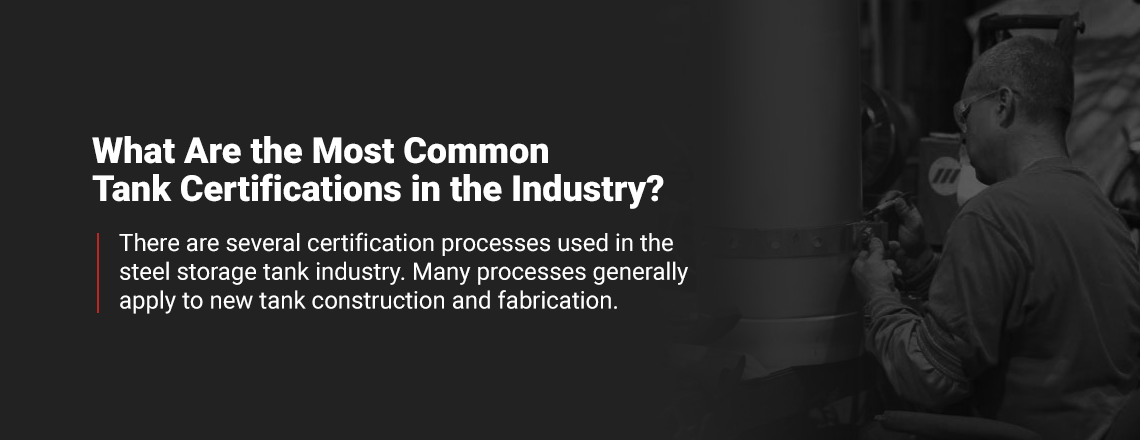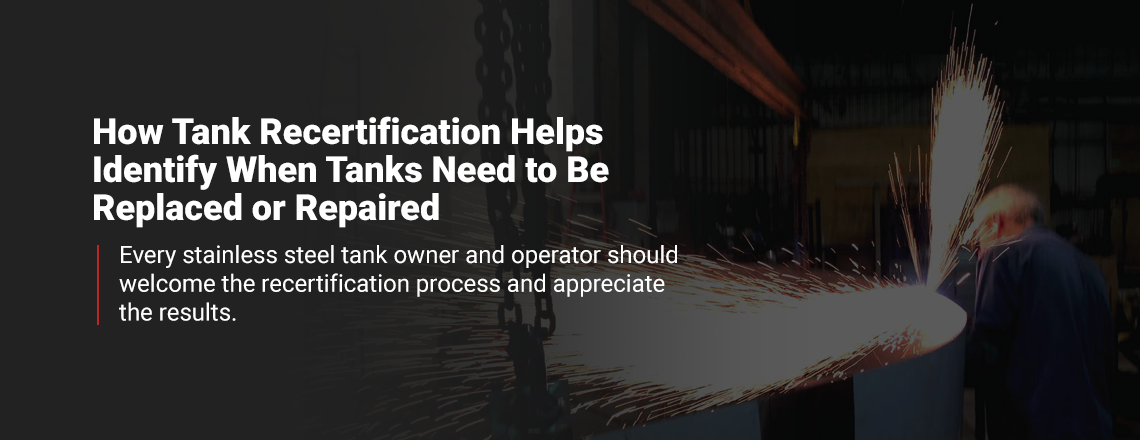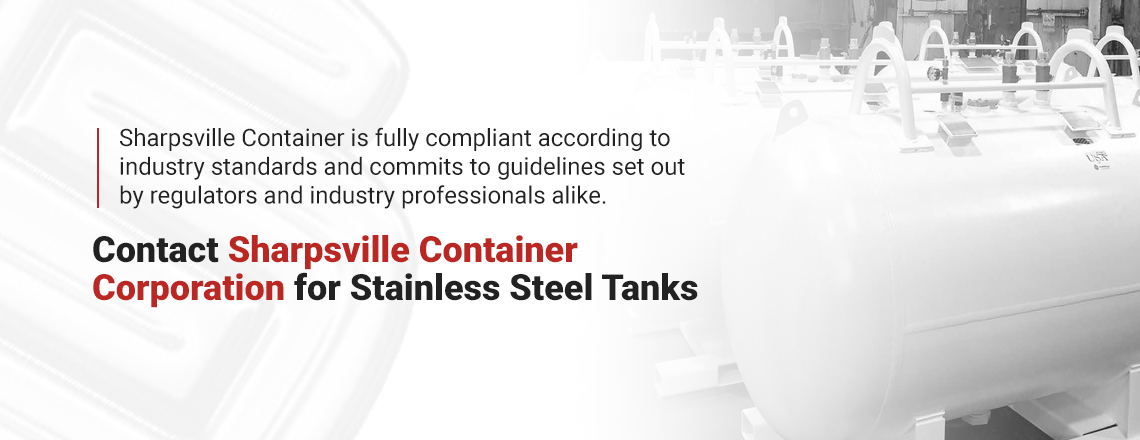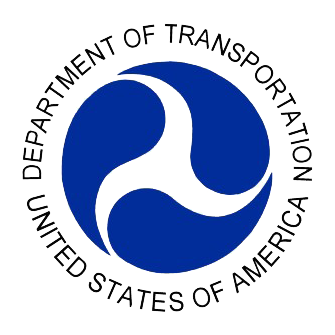The Importance of Tank Recertification
Stainless steel tanks are the most common containers used to control fluids and prevent hazardous, unintentional discharges. Tanks come in sizes ranging from small portable cylinders up to huge, field-fabricated silos. Like every manufactured product, steel tanks are certified for safety by their manufacturer but still face regular wear and tear. For complete safety and regulatory compliance, it’s important to periodically recertify all types of tanks.
No single governing body certifies or regulates stainless steel tanks and no particular jurisdiction oversees tank use and tank recertification. Publications on tank construction, maintenance and inspection frequently refer to “integrity testing according to prevailing industry standards.” That is a general description, however, and the phrase crosses a myriad of regulatory bodies and independent testing agencies.
There are many reasons to get tanks recertified. Primarily, it’s in the tank facility’s or owner’s best interest to prevent accidental spills regardless of the commodity they’re storing. Huge fines or penalties can result from tank leakage, especially when there is personal injury, property damage or an environmental impact.
Safety is everyone’s concern. Excellent tank integrity is the first defense line in protecting against spills, particularly when the stored product is hazardous or dangerous goods. As tanks wear with age and use, they naturally weaken and their structural integrity slowly compromises their safety. Storage tank recertification alerts the owner if a tank needs repair or replacement.
Periodic tank recertification is economical insurance against failure. A challenge for tank owners is finding the right recertification method and the qualified source for inspections. Many tank owners turn to their original equipment manufacturer for inspections and recertification. Others looking for stainless steel tank recertification retain professional engineers who specialize in the field of recertifying storage tanks.
Most tank owners know that tank recertification is important. They also know the benefits of getting tanks recertified. However, many tank operators are not familiar with the steel vessel recertification process. For them, storage vessel recertification appears complicated. That is fortunately not the case if they understand the most common tank certifications in the industry.
What are the Most Common Tank Certifications in the Industry?
There are several certification processes used in the steel storage tank industry. Many processes generally apply to new tank construction and fabrication. Quite often, though, the same or similar details also apply to in-service tanks that need inspection to ensure they continue operating safely.
Tank recertification methods follow procedures prescribed by governmental and private bodies. They also follow international rules that emphasize good engineering practices as a requirement for all types of tank recertification. In no particular order of importance, these are the most common tank certifications in the industry:
American Society of Mechanical Engineers (ASME)
The ASME is a non-profit organization promoting knowledge sharing, collaboration, skills development and career enrichment around the world. The ASME Certification Mark (known in the industry as “The Mark”) is credible proof that a manufactured product meets or exceeds excellent standards for safety and performance. Stainless steel tanks bearing The Mark have been rigorously tested and certified for reliability.
ASME Section VIII applies specifically to pressure tanks. It details requirements for tank design, materials, construction methods, testing or examination and certification. Most tank recertification professionals use the ASME bar as their gold inspection standard.
United Nations/United States Department of Transportation (UN/DOT)
UN/DOT tank certification and recertification applies to mobile vessels used to transport hazardous or dangerous goods. Examples are highway transport tanks that move petroleum, propane and chemicals. UN/DOT certification regulates safety through proper construction and operation. This certification also places periodic time limits for tank inspections and formal recertification. Periods depend on the type of tank and its contents. Mandatory recertification periods of 30 months and 60 months normally apply to most stainless steel tanks used in transit.
United States Federal Regulations
Two other important U.S. federal regulators that affect stainless steel transport tanks are the Federal Motor Carrier Safety Regulations (FMCSR) and the Hazardous Materials Transportation Act (HMTA). Both pieces of legislation cover a wide range of rules regarding mobile tank construction, re-inspection and safety requirements. They apply on an inter-state basis to any tank being transported by highway vehicle, rail, air or water vessel. Both acts require tanks and containers to bear recertification proof.
European Conformity (Conformite Europeenne or CE)
This is known in the tank industry as the “CE Mark” and indicates tanks conform with safety, health and environmental protection requirements in the European Economic Area (EEA). Although it is a European designation, many tanks manufactured in the United States are also built for the European market. These are rigorous standards that many North American tank inspectors use as guidelines for recertification of American stainless steel tanks.
Transportable Pressure Equipment Directive (TPED)
This is another European tank standard that can apply to American stainless steel tank recertification. The TPED governs manufacturers, representatives, distributors and owner/operators who use pressurized container tanks to transport dangerous goods. That includes by road, rail, air and sea. TPED regulations cover the types of tank inspection, quality system approval, periodic inspection, product testing and conformity reassessment.
Transport Canada (TC)
The United States and Canada are huge trading partners. Every day, stainless steel tanks move across the border, whether as new products for sale or containing goods for distribution. Canada has some of the strictest regulations in the world concerning tank safety. The Canadian Transportation of Dangerous Goods Regulations (TDGR) specifies how tanks must be designed, built, secured, repaired and recertified. Tanks bound for Canada must bear safety marks indicating the container type, who constructed and approved it, who recertified it and when the inspections took place.
This information forms part of a Canadian Registration Number (CRN) for the individual tank. Most American tank recertification specialists routinely conform to the Transport Canada requirements.
American Petroleum Industry (API)
API standards apply to all stainless steel tanks used in the petroleum industry. Most tank manufacturers and recertification professionals also use the API standards as frameworks for certifying all tanks regardless of whether they are bound for the oil, gas and petrochemical world. Four API standards are important for tank recertification. The API Standard 653 is the most applicable to recertification, as it outlines controls for general tank inspection, repair, alteration and reconstruction. API-650 applies specifically to oil, API-620 applies to liquid natural gas and API-12D applies to petrochemicals.
Steel Tank Institute (STI)
The Steel Tank Institute and the Steel Plate Fabricators Association collaborate to privately monitor and inspect the tank and plate manufacturing processes in America. Both associations have inspectors certified by Underwriters Laboratories (UL) and have full authorization to issue third-party recertification to all forms of steel tanks, pressure vessels and piping systems. Tank inspection forms a large part of the STI mandate, which is outlined in their protocol titled STI SP001. Tank recertification specialists following STI SP001 have U.S. Environmental Protection Agency (EPA) recognition for adherence with the EPA rules for Spill Prevention Control and Countermeasure (SPCC).
Underwriter Laboratories (UL)
The Underwriters Laboratories stamp of approval, known as “UL,” is solid proof that a tank meets top standards. Of particular importance to stainless steel tank recertification is UL-142, also called the Standard for Safety for Steel Aboveground Tanks for Flammable and Combustible Liquids. The UL-142 document lays out testing requirements for primary, secondary and diked atmospheric storage tanks. UL rules dictate how tanks must meet fabrication, testing and re-inspection requirements.
National Sanitation Foundation (NSF)
The National Sanitation Foundation is an international organization dedicated to protecting and improving human health. As an accredited and independent agency, the NSF has authority to test and certify all equipment related to sanitation, including stainless steel tanks. The NSF stamp on recertified tanks attests they are sound and safe for operation. All government agencies at the federal, state and local level recognize NSF certification on steel tanks as proof of compliance with all safety, performance and quality standards.
What Does Tank Recertification Involve and Why Does It Matter?
In the stainless steel tank industry, recertification means that a used tank was once certified as meeting acceptable industry safety and performance requirements and has been retested to ensure it still operates at those standards. Recertification is also known as “integrity testing” and is where a tank’s structural and operational integrity is examined, documented and approved.
Recertification can be a formal process where hired specialized professionals perform strict and regulated inspections. Alternately, recertification can be an informal and in-house procedure regularly done by trained personnel in the operating facility. Formal or informal recertification depends on the type of tank, the environment it is used in, the materials it contains and also the overseeing regulatory body. Often, professional engineers sign-off on recertification documents.
Key terms in the tank recertification business are “applicable industry standards” and “application of good engineering practices.” Both terms simply mean that a tank meets the same good manufacturing tolerances as certified when it was new. A key piece of recertification guidance is the EPA’s Spill Prevention, Control and Countermeasure (SPCC) Program that clearly lays out storage tank inspection procedures.
The SPCC document defines industry standards as technical guidelines created by industry experts for general use across an industry. For steel tanks, that means standards developed by a professional consensus that establish the minimal accepted practice in the tank manufacturing industry. It also identifies testing methods to establish recertification approval. Tank recertification testing methods include:
- External visual inspection
- Radiographic examination
- Magnetic flux leakage (MFL) testing
- Ultrasonic thickness (UT) measurements
- Vacuum box testing
- Weld inspections
- Helium leakage testing
- Magnetic particle examination
- Acoustic emissions testing
- Inert gas leak testing
- Hydrostatic testing
- Other non-destructive examination methods
Tank recertification experts employ many of these sophisticated techniques in evaluating a tank’s operational worthiness. They also use a good deal of common sense. They also do their due diligence and make sure every aspect of a tank’s performance is capable of remaining in service before issuing a recertification approval.
Recertification factors include the tank’s age, when it was last certified and what that inspection identified. Inspectors also look at a tank’s service record, its original construction specifications and the environmental conditions it was exposed to. From this information, they assess the degree of risk the tank presents for accidental discharge and the potential damage that might result.
Steel tank recertification approval reports outline the method of inspection and a professional’s opinion of the tank’s operational worthiness. Inspectors eliminate principal elements that might cause the tank to fail before issuing a certificate. Usually, corrosion is the number one concern for steel tank failure threat. Other factors governing recertification are the tank’s foundation or support system as well as its piping connections.
Tank recertification is a serious matter. Stainless steel tanks normally have a long lifespan as long as they are treated within the manufacturer’s tolerances. Stainless tanks can also be costly investments to purchase, repair or replace. Recertification is a necessary step in every tank’s life cycle. It spots potential problems and rectifies them before an expensive event occurs.
Having steel tanks recertified on a regular schedule has another positive outcome. Recertification sends a strong message to all involved parties in the tank’s sphere of influence. That includes owners, investors, employees, service professionals and the company’s customers. Recertification is the mark of professionalism, especially when it is approved by agencies and overseers like ASNE, UN/DOT, CE, TC, TPED, API, STI, UL and the NSF.
How Tank Recertification Helps Identify When Tanks Need to Be Replaced or Repaired
Every stainless steel tank owner and operator should welcome the recertification process and appreciate the results. Recertification by an independent, third-party inspection professional will identify potential problems so prevention occurs before it becomes too late for repairs. Early tank replacement from failure to inspect and maintain a tank is costly and unnecessary.
Aside from the unnecessary cost of premature tank repairs or replacement, failing tanks can present a disaster waiting to happen. That might be a toxic environmental spill, a fire or an explosion. The cost for environmental cleanup could be massive, but that might be minuscule compared with the cost of human injury or even loss of life.
Recertification is a straightforward process in most stainless steel tank applications. Identifying a problem allows time to intervene. Business owners can assess if they want to repair the existing tank or contract out for a replacement. They will also know why their current tank is failing and what can be done to prevent future situations.
Having a professional tank recertification is inexpensive insurance. It will identify if a tank needs replacing or repairing. It will also give assurance that a tank is still in premium condition and will provide reliable service until its next recertification date. The period of time between certification dates depends on the individual tank, the specific contents and the owner’s commitment to excellent performance.
Contact Sharpsville Container Corporation for Stainless Steel Tanks
Sharpsville Container Corporation specializes in fabricating and assembling high-quality stainless steel containers. As a full-service manufacturer and certified ISO 9001 company, Sharpsville Container builds ASME pressure and DOT transport vessels. Additional container manufacturing capabilities include:
- Storage tanks and silos
- Process vessels and reactors
- Heat transfer systems
- Mixing and agitation tanks
- High-pressure cylinders
- Bio-pharmaceutical and antiseptic liquid handling vessels
- Carbon and stainless steel fabrications
- General and multi-purpose containers
Sharpsville Container is fully compliant according to industry standards and commits to guidelines set out by regulators and industry professionals alike. All of our containers meet or exceed ASNE, UN/DOT, CE, TC, TPED, API, STI, UL and NSF standards. We certify all our new containers for compliance and build them so they will continue to comply when periodically recertified.
For more information on stainless steel tank manufacturing and recertification, call Sharpsville Container today at 800-645-1248 or contact us online.
